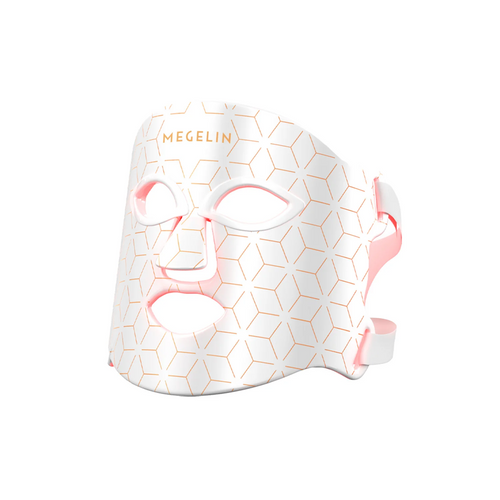
Red Light Therapy for Neck and Shoulder Pain: A Science-Backed Way to Relax Tight Muscles
Shoulder and neck pain have become almost universal discomforts in today’s screen-bound lifestyle. Whether from long hours at the computer, scrolling on smartphones, or poor posture, tension builds up easily in these areas—causing pain, stiffness, and even headaches. While massage, stretching, or hot compresses may offer temporary relief, a more advanced and non-invasive solution is drawing attention: red light therapy (RLT).
In this post, we’ll explore how red light therapy works to ease neck and shoulder pain, what scientific studies say, how to use it effectively, and the best devices—especially for those who want fast, deeper, and lasting results.
Why Are Neck and Shoulder Pains So Common?
Modern routines often lead to prolonged forward head posture and shoulder rounding, straining the trapezius, levator scapulae, and cervical muscles. Over time, this causes:
- Muscle tension and spasms
- Nerve compression
- Reduced blood flow
- Inflammation of tendons and joints
These issues can worsen without proper intervention. That’s where red light therapy comes into play—as a natural, drug-free, and evidence-backed method to support healing.
How Does Red Light Therapy Help with Shoulder or Neck Pain?
Numerous studies confirm that red and near-infrared light therapy (RLT/NIR) can effectively reduce pain and inflammation in muscles and joints.
Red light therapy works by emitting specific wavelengths of light—typically between 600 to 1000 nm—that penetrate the skin and reach the muscle tissue below. This light stimulates mitochondrial activity, improving cellular energy (ATP) production, reducing oxidative stress, and enhancing blood circulation. These combined effects help relieve stiffness, speed up recovery, and calm inflamed tissue.
📚 What Does the Science Say?
A 2022 randomized controlled trial published in the Journal of Lasers in Medical Sciences investigated the effect of red light therapy on neck and shoulder pain in office workers. Participants received 850 nm light therapy three times per week for 4 weeks.
Result: The RLT group experienced significant improvement in pain levels, range of motion, and quality of life compared to the placebo group.
(Source: PMC9576044)
The study concluded that red light therapy could be a “non-pharmacological, cost-effective, and safe method” for managing musculoskeletal pain in the neck and shoulder area.
How Often Should You Use Red Light Therapy for Neck and Shoulder Pain?
For best results, consistency is key. Based on clinical protocols and manufacturer guidance:
- Frequency: 3–5 sessions per week
- Duration: 10–20 minutes per session
- Distance: Follow your device’s instruction (usually 0–6 inches away)
- Course Length: 3–8 weeks for noticeable improvements, longer for chronic issues
It’s important not to overuse it. Give your tissues time to respond between sessions. Once the pain subsides, you can move to a maintenance phase—about 1–2 times per week.
Best Red Light Therapy for Neck and Shoulder Pain
While red light therapy panels or handhelds are popular, targeted wearable wraps are the most effective choice for treating neck and shoulder pain. Why? Because these areas are curved and mobile, requiring flexible, full-coverage designs with strong output.
🔥 Top Recommendation: Megelin WrapLux Laser+LED Light Therapy Wrap
The WrapLux combines deep-penetrating laser (808 nm) with broad-area LED red and NIR light (660 + 850 nm)—a dual technology rarely seen in home devices. This makes it highly effective for:
- Chronic shoulder pain
- Neck stiffness
- Muscle recovery post-workout
- Cervical spine discomfort
✅ Key Benefits:
- Laser + LED combo for surface + deep tissue therapy
- Adjustable fit for both shoulder and neck areas
- High irradiance output for clinical-grade results
- Auto-timer + safety design for home use
If you want a serious, long-term solution—not just warm relief—WrapLux delivers real therapeutic impact.
Other Device Options
If you’re on a budget or want multi-use flexibility, consider:
- Handheld red light devices: Portable and versatile but require manual holding
- LED panels: Powerful but hard to position over neck or shoulders
- Infrared and Red Light Bag: Provide full body red light therapy
Choose based on your needs, budget, and whether you prefer hands-free convenience or broader coverage.
Are There Any Side Effects?
Red light therapy is generally safe, non-invasive, and FDA-cleared for pain relief. Most users report no side effects, although some might feel mild warmth or temporary redness in the treated area.
To avoid discomfort:
- Don’t overuse it (stick to recommended times)
- Don’t apply to open wounds or eyes
- If you have light sensitivity or are on photosensitizing medications, consult your doctor
The Takeaway
Neck and shoulder pain don’t have to be part of modern life. With the right tools and consistency, red light therapy can become a powerful ally in your self-care routine.
It’s backed by research, easy to use at home, and especially effective when delivered via high-quality LED and laser wraps like the Megelin WrapLux. Whether you're an office worker, athlete, or simply tired of chronic stiffness, give your body the healing light it deserves.

